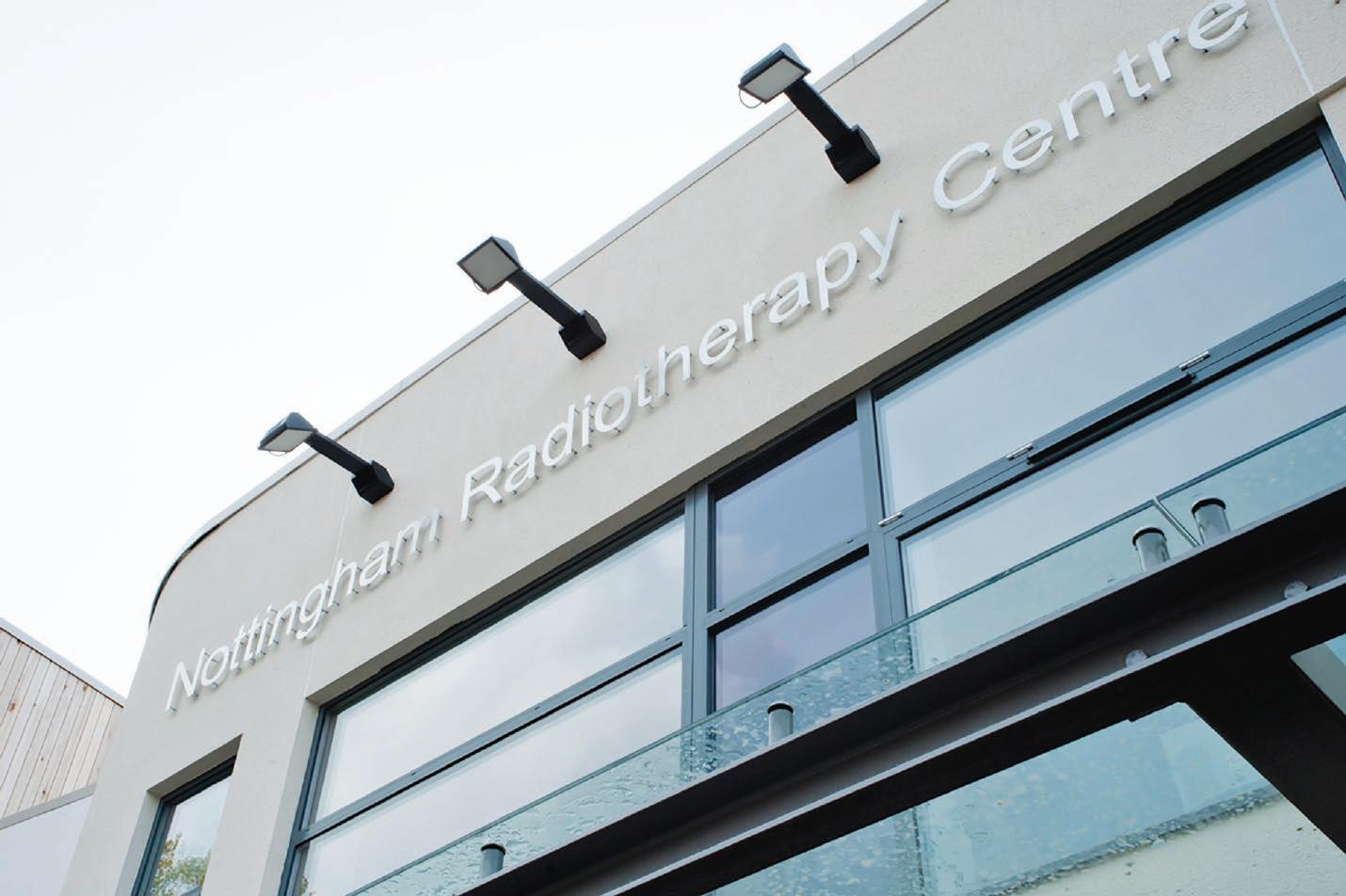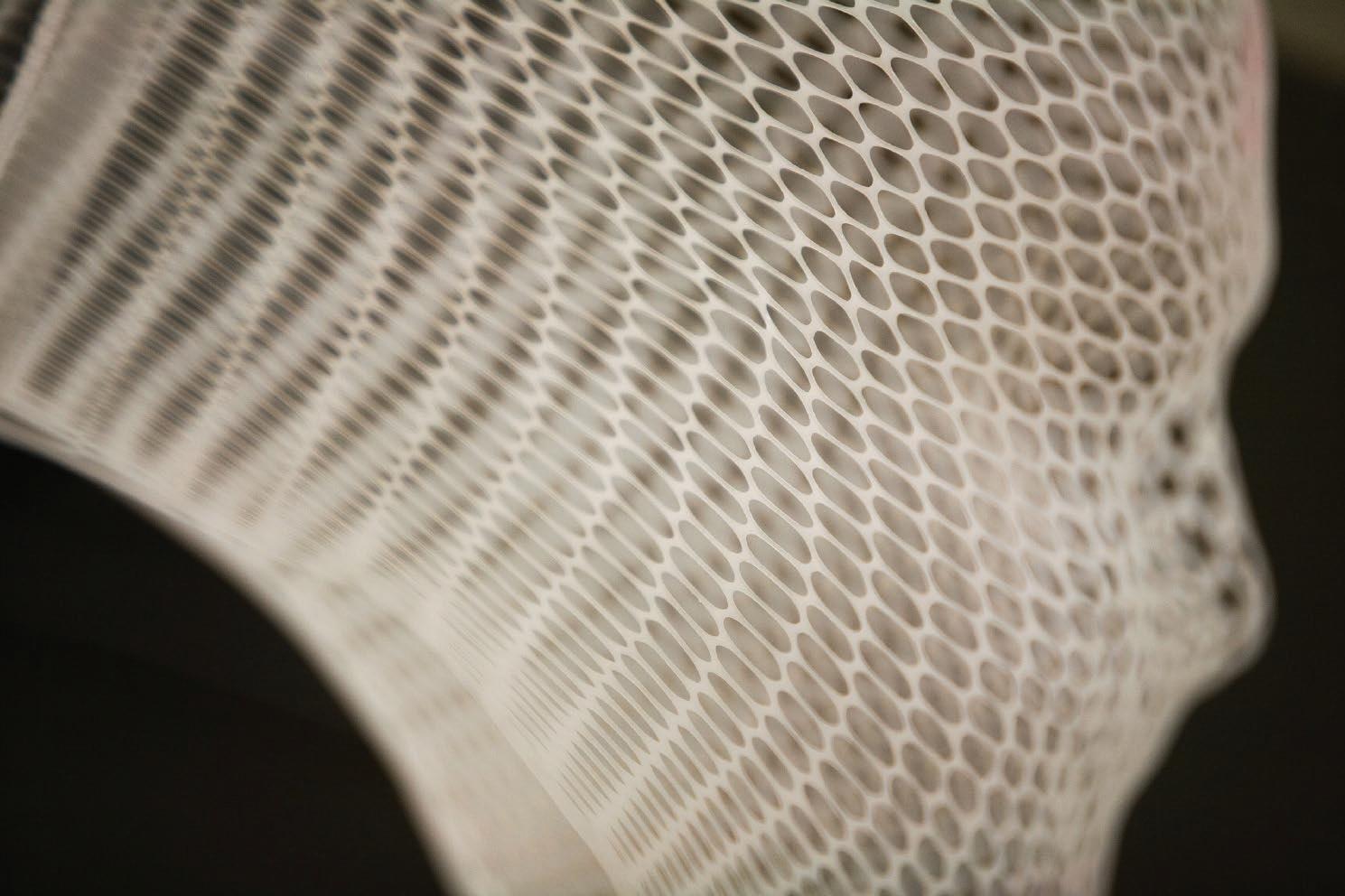
7 minute read
Advanced Integrated SRS Systems Improve Clinical Outcomes and Workflows
Dr. Sophie Laurenson (BSc Hons., Ph.D. Cantab.)
SRS and SBRT are complex, multidisciplinary procedures. Systems integrating and automating radiation delivery, patient positioning, imaging and treatment planning improve patient outcomes, clinical workflows and treatment cost-effectiveness.
Introduction As local therapies against cancerous lesions continue to evolve, management strategies have moved from a “one-treatment-fits-all” approach towards a more tailored and patientcentric design. Stereotactic radiosurgery (SRS) is intrinsically complex, involving multidisciplinary teams managing collections of sophisticated technologies. Regardless of the radiation delivery approach used, the fundamental concepts of radiosurgery remain consistent. They include the precise delivery of high radiation doses, minimal exposure to adjacent tissues, stereotactic localization, and automated dosimetry planning 25 . SRS is an integrated process, beginning with patient immobilization, target localization and delineation by medical imaging, treatment planning and finally, radiation treatment delivery. High definition dynamic radiosurgery (HDRS) is characterized by the integration of SRS features into a single clinical solution that enables optimization, planning, imaging and dose delivery.
SRS Systems: Integrated Platforms to Improve Patient Outcomes SRS delivery systems can be grouped based on the radiation delivery method employed 16 . Gamma Knife ® platforms deliver radiation from a series of Cobalt-60 (60Co) sources, in contrast to systems utilizing a single source linear accelerator (linac). Precision and accuracy in SRS systems stems from the ability to manipulate radiation beams to directly affect only abnormal target tissue, without harming adjacent normal structures. This is achieved through treatment planning, enabling the optimization of dosing and dose distribution suitable for different SRS systems. The Gamma Knife ® , invented by the Swedish neurosurgeon Lars Leksell 1 , contains 192-201 cobalt-60 sources, each emitting a beam of gamma ray radiation. The beams converge at a point of intersection, known as the isocenter, to deliver a collimated beam directed towards abnormal target tissues. Mechanical accuracy of SRS radiation units is essential in positioning and aligning external radiation beams toward a target 17 . Despite weighing over one ton, the Gamma Knife system can achieve a beamfocusing accuracy of less than a millimeter (4). Linac systems generate high-energy x-ray beams that are manipulated with collimators to produce sequential cross-firing (or arcing) beams directed towards the target. Treatment planning involves deploying non-coplanar arcs of circularly collimated radiation beams rotating around a target isocenter 26 . High output linacs have been developed with improved mechanical accuracy and integrated software for SRS planning. A major advancement in SRS linac was the multileaf collimator (MLC) 27 . MLCs are devices consisting of between 80-160 high atomic number “leaves”. Each leaf can independently interact with the radiation field, modulating the beam intensity and dose distribution shape with extreme precision. In this way, the radiation beam may be manipulated to conform to the exact morphology of the abnormal tissue. This ensures that residual disease in not left in situ, whilst limiting damage to adjacent healthy tissues. These advances paved the way towards intensity-modulated radiosurgery (IMRS), now often referred to as volume modulated arc therapy (VMAT). A major concern is the integrity of the imaging spatial accuracy and quality in correlation to the radiation beam isocenter 26 . Quality assurance checks must be implemented to ensure that the imaging system isocenter correlates with
that of the beam delivery system. Irregular gantry rotations or hardware aberrations can result in distortions between systems, which must be calibrated and corrected 17-24 . Digitally controlled linear accelerators (DC-linac) mitigate against hardware misalignment and miscalibrations. These platforms contain multi-level feedback and sensor systems to control gantry speed, collimator angles, pulse rate and beam energy switches. This level of hardware control enables modulated therapy with a limited number of arcs and has become an essential tool 25-29 .
Imaging Technology in SRS The complexity of treatment planning means that SRS accuracy must be evaluated endto-end, taking every stage into account as potential for deviations. The accuracy of SRS systems relies heavily on the localization and delineation of target tissues. In this respect, both patient immobilization and imaging of the stereotactic space are critical variables to assess and control. Recent technologic developments have included integrated image guidance systems and robotic couch positioning systems. These advances have enabled enhanced accuracy of SRS systems to within the submillimeter range 28 . Two-dimensional (2D), three-dimensional (3D) and four-dimensional (4D) imaging and localization techniques are used to determine the position of the target tissue within the body. Integrated imaging systems are designed to correct for setup errors and target motion within patients undergoing SRS treatments. Image-guided radiation therapy (IGRT) uses medical imaging to confirm the target location immediately before and / or during radiation treatment, to improve precision and accuracy. Imaging modalities include 2D radiographic
and fluoroscopic image acquisition, Computed Tomography (CT), Magnetic Resonance Imaging (MRI), and Positron Emission Tomography (PET)/ CT and cone-beam computed tomography (CBCT). Images from multiple modalities may be merged and analyzed to determine the exact spatial coordinates as well as the morphology and size of targets. Fluoroscopic images are used to analyze movements resulting from respiratory motion and radiographic images are used to determine interfractional motion and minimize setup errors. The CBCT images provide soft tissue and skeletal data and are also used to manage interfractional motion and setup errors. When used in combination, image data guide the treatment planning process, to determine radiation delivery, convergence angles and planes and patient positioning during treatments. Sophisticated algorithms and integrated computing capabilities can leverage these large data volumes to provide optimized treatment planning for each patient. Sophisticated algorithms and integrated computing capabilities can leverage these large data volumes to provide optimized treatment planning for each patient.
Patient Outcomes and Safety The clinical outcomes of SRS treatment take a period of at least several months to become apparent. As a result of this delayed end-point, any errors in targeting or dosing will potentially affect a large number of patients that may be treated during the intervening time 29 . Further, the high doses and the relatively short course of treatment make SRS and SBRT less tolerant of error than other radiation treatments. SRS systems deliver steep dose gradients with small margins within or adjacent to vulnerable organs. There are fewer opportunities to identify and correct errors in short-course treatments. Other challenges include a necessary reliance on imaging modalities, each of which has its own set of latent errors. Extensive quality assurance
(QA) protocols are necessary to mitigate against these risks 30 . SRS and SBRT also present challenges in clinical workflow that can manifest in errors. Peer review of treatment planning is strongly recommended by many best practice guidelines. However, peer review may be difficult to implement in clinical settings experiencing resourcing issues. The multidisciplinary nature of SRS clinical implementations means that special resource requirements in staff effort and training may be required. If this requirement is not recognized, inadequate resource allocation may lead to errors. Integrated Quality Assurance (QA) capabilities are key in ensuring that each component of the SRS system is functioning both in isolation and in combination. Further, automated and robotic systems that adjust patient positioning, radiation dosing and delivery and image acquisition and analysis can all contribute to ensuring standardization and quality control in service delivery.
Workflows and Cost-effectiveness SRS care teams involve radiation oncologists and technicians, neurosurgeons, and medical physicists. Collaborative efforts promote risk minimization and improved patient outcomes. The workflow associated with SRS and SBRT procedures is driven by the degree to which systems are integrated. Patient positioning methods and imaging modalities can both impact on clinical workflows. Using frameless procedures is reliant on high-definition imaging, performed prior to treatment planning 5 . Advanced imaging modalities such as CBCT take between 10-12 min to acquire and analyze. This effort is extrapolated if multiple imaging modalities are required to formulate a treatment plan. These considerations should be built into clinical workflow plans and are minimized through integrating imaging, patient positioning and radiation delivery components. Cost-effectiveness analysis studies have demonstrated that both SRS and SBRT are likely to be cost-effective management strategies for various types of cancer. Efficiencies are largely led by absolute cost savings from fewer treatment sessions billed to payers. Despite potential cost savings, both techniques also provide similar or improved cancer control compared to other techniques 31 . Single dose treatments are more cost-effective that fractionating treatments. Further, they reduce the risk of interfractional variations and improve patient experiences through convenience. For these reasons, integrated SRS systems that enable a high degree of radiation beam modulation are desirable.
Conclusion The ability to tailor SRS and SBRT technologies to patient requirements will extend the utility of these technologies and expand access to further patient populations. For example, the treatment of low grade gliomas, a heterogeneous group of tumors will be possible through the ability to conform the dose distribution to different tumors sizes and shapes 32 . Integration with different imaging modalities, robotic patient positioning and automated treatment planning and QA protocols contributes to improved patient outcomes and experiences as well as more efficient and costeffective treatment delivery.







